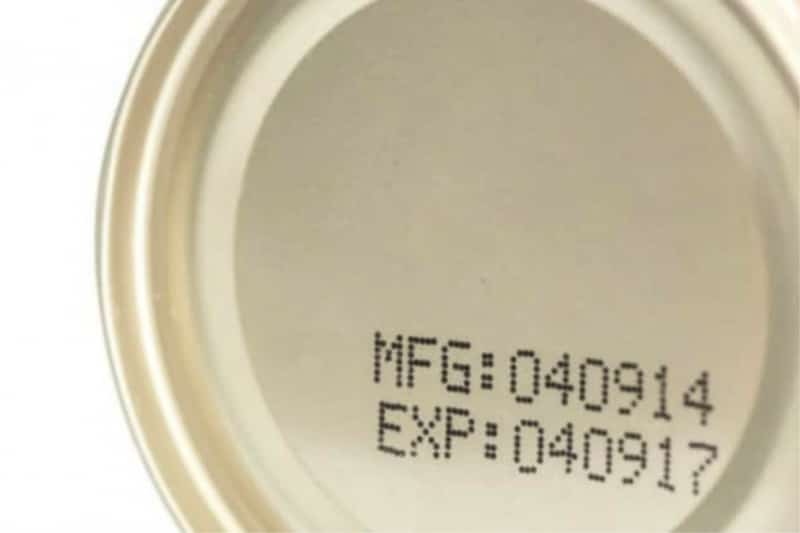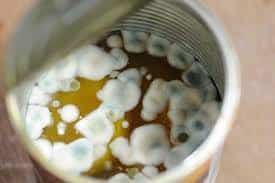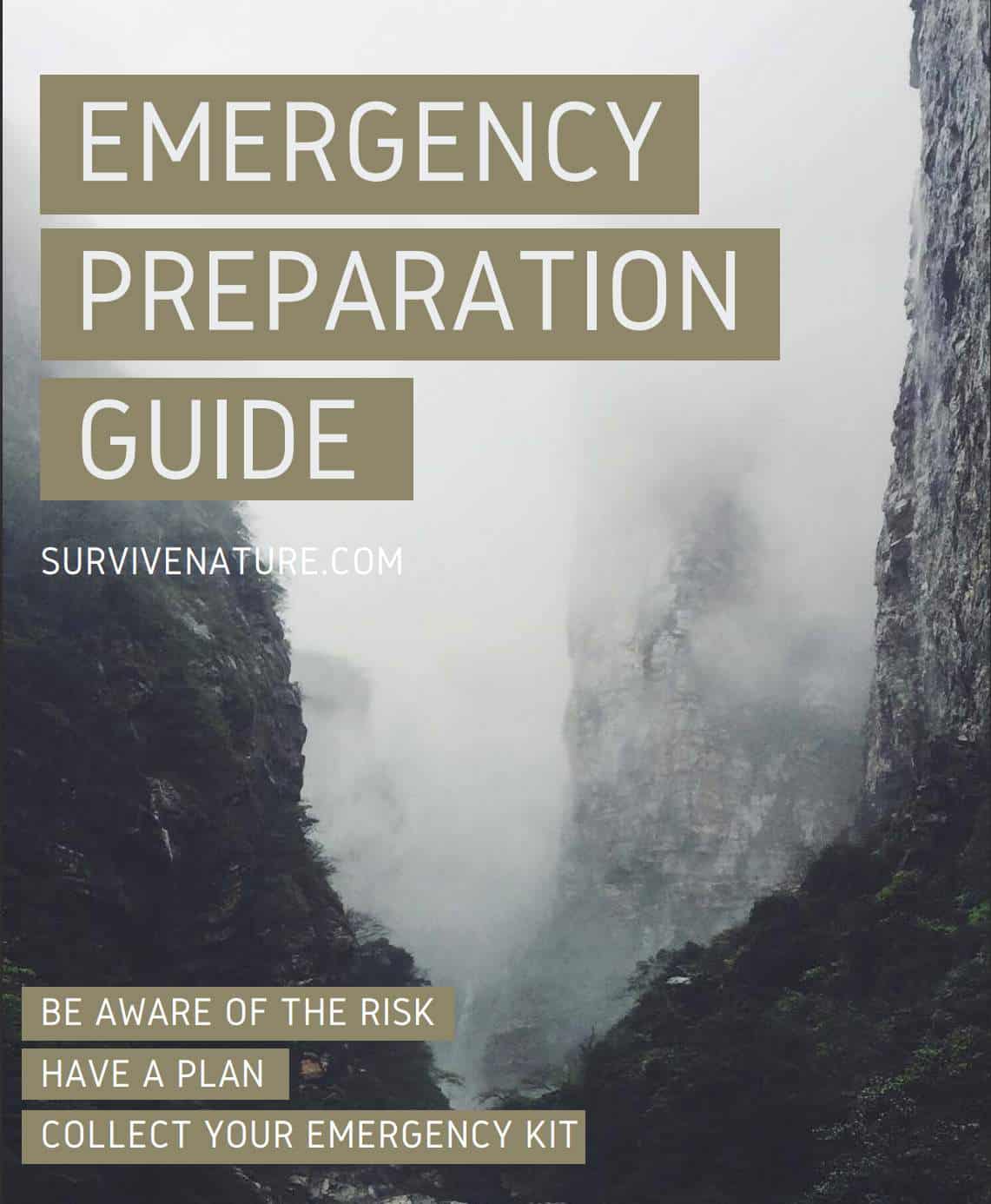There is no doubt we deal with and eat various products daily in our kitchens. However, one’s home storage is not infinite and timeless in the sense that each product has an expiration date that is considered to be the last day when you can eat it.
There is no difficulty to use by-date dairy products and bread, for example, but what about canned foods that have a very long period of usage? Are they really becoming unbeatable right the next day after the expiration date? What will happen if one eats expired food? To know the answers to these questions and a few tips, stay with us and become an advanced cook.
Making Sense of Expiration Date Codes?
In our daily life, there appear no questions about whether to throw away an expired product. However, when you have to survive in wild conditions, each piece of a food product is crucial. That is why it is important to know not only how to read expiration dates but also whether it is possible to make any use of the damaged cans and expired products.
Even though there is no defined standard for creating expiration dates on particular products in the US, there exist two types of expiration date codes:
- Open Date Code
Those are common calendar dates that are stamped by manufacturers right on the package of the product. The consumers decide on a voluntary basis whether they want to follow the defined date of utilization. It is like the food quality assurance date, so you should rely on yourself when deciding to eat the food after expiring.
- Use-By or Sell-By Dates
It is also a widely used type of defining the expiration date of the product. They are simply labels “pull-by”, “sell-by”, or “use-by” printed next to the date. Consumers may use it to know in advance the date when the foods will start to worsen. The Grocery stores also make use of them by knowing when to finish the product’s shelf life.
There are also closed-coded labels that look like a random combination of letters and numbers. They make no sense to both consumers and stores since they are just notions for the manufacturers on tracking the inventory.
To find the food expiration date of the packaged foods, check the top, the bottom, the sides, and the neck of the product. Make sure you find the needed information that consists only of the future date.
Most companies prefer to print the expiration date of the canned foods on the lid or the bottom of the can, so it will not be hard to find and understand the expiry date. What is more, the baby food and infant formula producers have to follow the federal law towards printing the expiratory date, so you should not meet any difficulties with it.

How to Read Closed Coding Expiration Dates?
Do not be confused if you see a closed code on the packaged foods because there is nothing to be concerned about while reading it. Unfortunately, there is no single system for writing closed codes, however, it is still possible to figure things out.
So, here are some possible ways to print expiry dates:
- using a specific letter for the names of the months. However, it is not about abbreviations, since in this case, you will find “A” for January and “E” for May. Indeed, the letter equals the ordered number of the month. After a letter, there will be four numbers that identify the day and year. For example, “H1722” means August 17, 2022.
- other manufacturers prefer using numbers of months straight away. But in this case, there will be a number 1-9 for January-September and the first letter of the word for October, November, and December.
- the most widespread option is using six-digit codes standing for the YYDDMM format of the date. In this case, you will find 221807, meaning July 18, 2022. However, some companies may use another sequence, such as YYMMDD or MMDDYY (month-day-year code), for instance, but most likely you will not get lost in these numbers relying on what date it is now.
- as for the left cases, companies may use Julian’s calendar for defining expiration dates. It is probably the most confusing format of writing any date, yet it is usually used by the egg and some other foods suppliers. It is a three-digit number from 1 to 365, each meaning a specific day of the year, where 1 stands for January 1 and 365 for December 31.
In any way, the date listed on the package may be recognized by a store employee if you struggle with finding or reading it, so you shall not be afraid of buying an expired shelf life product.
Does Food’s Quality Depend on the Expiration Date?
Surprisingly or not, the expiration date printed on the canned foods or even milk and other dairy products is not an exactly defined time after which it is restricted to eat the food. Except for the fact that some food can be stored longer than the listed expiration date, there also exist some factors that may affect the quality of the product. So, the manufacturers try to foresee the food’s storage quality beforehand and thus can predict shorter shelf life periods.
Moreover, the foods can be affected by various aspects in the consumer’s house, so that may change the food safety conditions and shift the expiration dates:
- damaged packages and dented cans can affect the freshness of the product. Even canned goods that usually have a very long period of storage can get spoiled earlier just because of dent or crack. It is explained by the fact that damage can remove the seal that provides food safety from bacterial growth.
- shifts in temperatures also can affect the actual food expiration date. The change of temperature may lead to instant food spoilage. That is why storing food in an attic or garage is a bad idea. However, subjecting canned goods to high temperatures is even worse than storing them in unstable temperatures. Even food properly prepared for warm temperature regimes can expire after a temperature higher than needed, especially fresh meats.
- absence of proper storage is also a factor that causes a violation of the shelf life of food. When choosing where to put your food supplies, you should consider not only the temperature and package integrity but also the absence of animals and insects, and the compatibility of the products that you are going to store.
What to Pay Attention to When Choosing Food in Store?
One more important aspect of storing canned goods is acquiring them in the best condition. Always remember to look at the use-by and sell-by date codes. Consider the purchase date and for how long you are going to store the cans and when you want to eat food from these cans.
To pick the best quality, avoid discounted stands. Usually, dented cans and those with expiration days past are presented there for those who are going to eat them in the near future.
Difference Between Use-By, Sell-By, and Best-By Expiration Dates
You may have noticed that the food expiration date codes have different values that can be either “sell-by date”, “use-by date”, and “best-by date”. So, what is the difference between them, what to pay attention to, and how do they affect the food?
- The best-by or best-before expiration dates are simply a kind of quality assurance date. The foods are good for eating after this date and you will not feel sick. It is just the peak quality food’s shelf life. It is mostly applied to fruits, vegetables, and fresh meats.
- The use-by dates are made specifically for the consumers so they can understand what the last days of the food products are. It is not a safe date for the product (except for the case of infant formula), so you can still buy it and use it for your meal. However, you’d better not store these goods for a long time after the expiration date.
- The sell-by date is the day when the retailer should remove the product from the shelf. It is definitely not a safe date, and in the majority of cases, sell-by dates cover two-thirds of the whole period of the food’s shelf life. It means that if you see a dairy product or semifinished goods with the stamped sell-by date, you can still buy it (however, it is still better to eat them in the next few days).
- You may also find freeze-by food expiration date codes that simply define the dates until which the product is better to be frozen to remain vitaminized and in the best condition.
It comes out that there are almost no strictly defined food expiration dates stamped on the packages, especially if you consider canned goods. However, it is undoubtedly better to acquire food products with a longer period of storage.
Can I Eat The Foods After Expiration Date?
Let’s proceed with getting to know more tips on how to “prolong” the expiration date of the food products. Surely, you can eat food even after the stamped usage day was yesterday or even further in the past. For example, even though canned goods are considered to be non-perishables, there may still occur some factors that may shorten the food expiration period. That is why manufacturers prefer to print a conservative best-by-date in the date codes.
So, one of the most reliable factors that you may pay attention to when deciding whether to eat or not to eat some product is if it does not give off an odor. Good food shall not stink, so it is a simple rule. You are likely to know how meat, yogurt, or banana smells. Another easy direction is whether the product looks good past the expiration dates.
What about canned food? Iit is usually best to eat it within two years after the expiration date. However, there have been cases when people had to eat preserves seven years after the expiry dates and experienced no discomfort.
Here is a small guide on several products and in which period you can eat them:
- milk – apply in 1 week in refrigerated and up to 3 months if frozen (though pasteurized milk can be stored for longer periods),
- bacon – apply in 2 weeks if it is not opened or 1 week if opened when refrigerated, and within 1 month if it is frozen,
- eggs- apply within 3-5 weeks if refrigerated,
- ketchup and tomato paste – apply in 6 months if it is opened and when refrigerated, or store in the cold storeroom for 1 year if not opened,
- beers and other alcohol drinks – drink in 1 day when opened and refrigerated, or store in the dark storeroom for 9 months if closed,
- cereals and dry pasta – apply in 2 years.
One more hack is to apply slightly expired dairy products and cheese to the main courses and dishes. For example, you can make pancakes with a small amount of skimmed milk per scoop of flour. Thanks to the heating, some junk fumes and particles will be eliminated and will not affect the taste of the dish.
The majority of the listed tips do not consider milk and meat products that are too sensitive for the storage conditions and may cause severe problems with health if used incorrectly.
How to Prolong the Shelf Life of The Foods at Home?
Yet you can rely on your luck when eating expired foods, instead, you can organize your storage in a way that the food will live longer and be absolutely fine to eat even after the expiration dates. If you start doing this and make it your routine, most likely you will find it not difficult to apply all of these methods.

Seek moldy food and throw away the products that are close to becoming rotten. Many foods can infect other products with mold. To avoid having your whole storage infected, you can apply food labels. Just write the name of the food stored in the container and their approximate ending dates.
Try applying temperature-controlled storage pantries. For instance, according to the Canned Food Alliance, the best temperature to store canned food is 75 degrees Fahrenheit. Also, avoid high humidity inside the storage. Otherwise, the mold occurrence will be increased. Do not hesitate to clean your fridge every month!
Conclusion
It is not hard to store the products in the correct way. Moreover, organizing your food storage can become a pleasing home routine. It will also give you more motivation to cook healthy and delicious meals. Besides, you can use our guide on how to prolong the shelf life of some products and how to understand whether the food is ready for eating.
Although frozen products last longer, they usually lack mineral elements and vitamins. The same as with heating, big temperature shifts will result in losing the product’s initial purpose which is nutrition. That is why you’d better eat food that is in the freshest condition and has not gone off any ending dates.
Also, do not forget that eating skimmed food can cause severe health and digestive problems. Even the canned food that is believed to be consumable for decades can make you feel sick after a year of expiring.
Frequently Asked Questions – FAQ
How to Read Six-Digit Expiration Date Codes?
In the majority of cases, six-digit codes contain the dates of the MMDDYY format. It means that the code “112322” stands for November 23, 2022. However, sometimes the same format can contain another order of dating. Do not forget to check the purchase date to make sure the numbers do not mislead you.
Can I Store Meat in The Freezer and Eat It After The Expiration Date?
It is considered that meat and semi finished products can be stored for longer time periods when being frozen. Indeed, it is true. However, there is still an opportunity that the food may become rotten even in the freezer. Moreover, if the temperature in the freezer shifts a bit, it already seriously affects the quality of storage.
Can I Drink Milk a Week After Its Expiry?
You can drink milk within two weeks after its stamped expiration date. However, dairy products are extremely sensitive to storage conditions. What is more, these foods also may cause durable nausea and some other health issues. That is why it is better to avoid experimenting with their usage after expiry.


